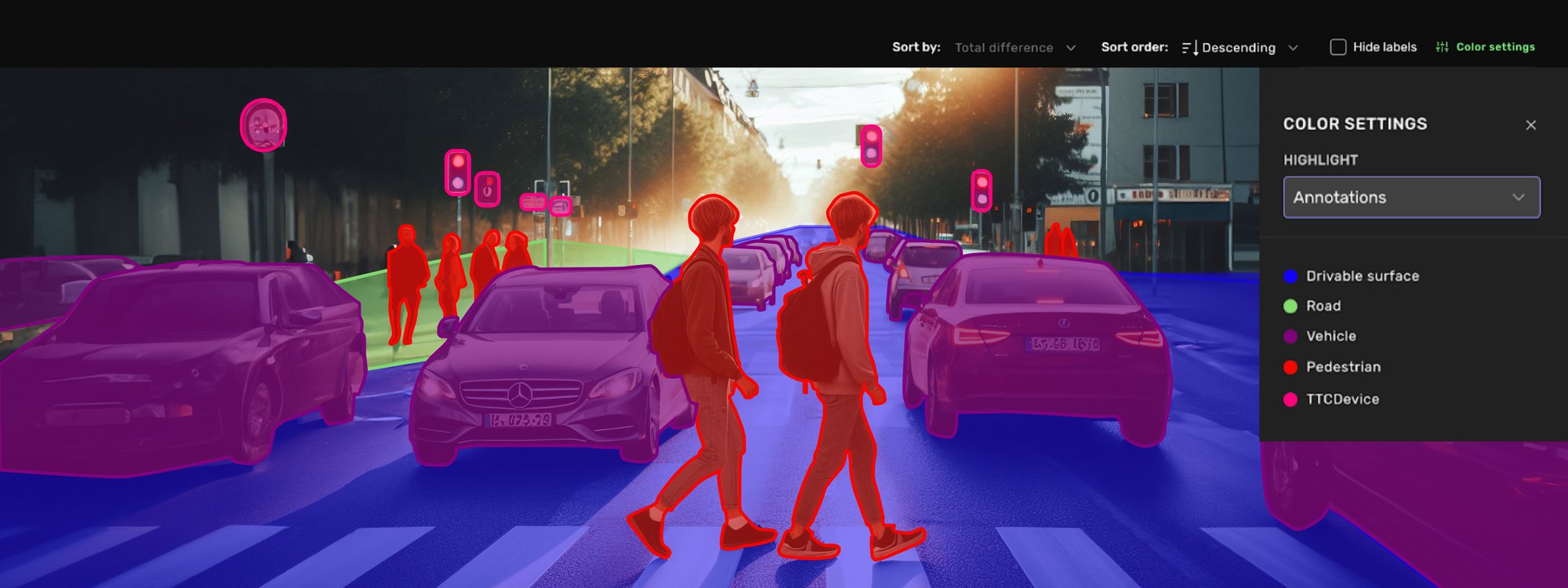Explore your datasets with Semantic Segmentation
Semantic Segmentation is now supported as a key feature in Kognic's data exploration tools. By revealing critical patterns and insights, Semantic Segmentation helps you to better understand your datasets.
Semantic segmentation is a crucial computer vision task that uses deep learning to assign class labels to individual pixels, aiding computers in understanding visual data. It's an integral part of image segmentation that identifies and classifies pixel groups based on various characteristics. This process is essential for AD/ADAS, enabling machines to interpret and interact with visual data much like the human brain.
The concept of Semantic Segmentation is complex. For instance, the term "road" can have different meanings in different contexts, so it is necessary to examine a wide range of data to add value to your dataset. Kognic’s Explore capability enables you to inspect annotations, search and then filter the data based on the size of each class segment in each image. This function helps you to find relevant images and conduct sorts by the size of the segments for each class - as just one example.
Try it out for yourself:
With these tools, you can compare your model's predictions with the annotated data. This is particularly helpful for identifying where your model's results differ from the human-annotated data.
When examining these differences, three scenarios usually emerge:
- Annotation mistakes: These can occur as annotations are a manual process and sometimes errors pass through quality assurance.
- Model performance issues: If the sample is not an annotation issue, it's likely a model performance issue.
- Dataset ambiguity: Sometimes it's not clear how the model should perform or how to annotate. In these cases, team discussions and your current model predictions can guide the decision.
This new addition widens our already expansive use case coverage within the Kognic platform. If you are encountering any of these scenarios or wish to explore your datasets with Kognic, don’t hesitate to reach out.
Share this
Written by


